Gagging vs. Choking: What is the Difference?
- Which foods are choking risks and how to modify them to make them safe for your baby
- Why it is important not to intervene during a gag…and how to react when your baby gags
- What to do if your baby chokes on food
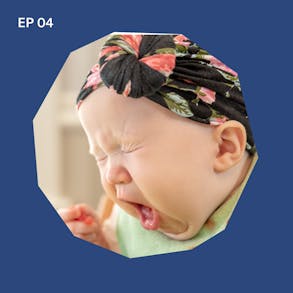
LISTEN TO THIS EPISODE
Episode Description
What if my baby gags on food? And how is gagging different than choking? In this episode we cover why gagging is a good thing when your baby is learning to eat and what to do if your baby chokes on food.
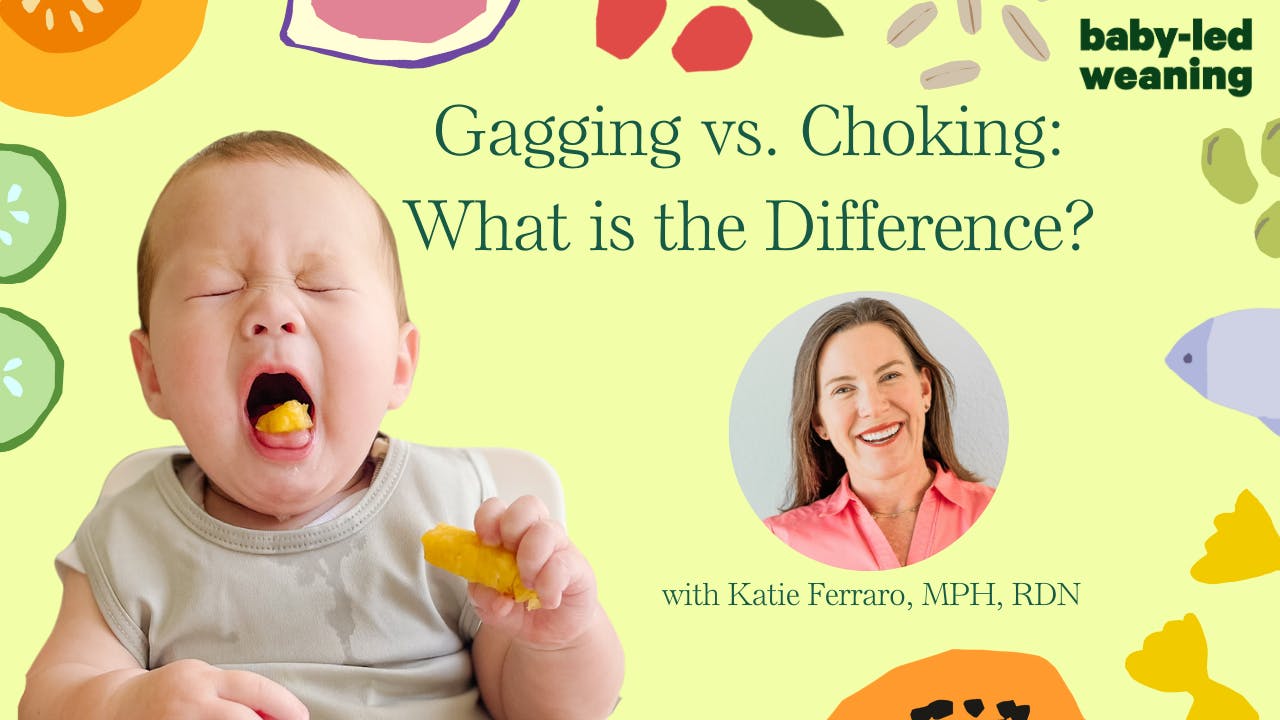
Links from This Episode
- Online Infant Refresher CPR Course - use affiliate code KATIE10 for an additional $10 off lifetime access to this online CPR class
- High Chair recommendations - look for an adjustable footrest…the Stokke Tripp Trapp is my favorite but here are some other high chairs that also have footrests.
- Puffworks Baby Peanut puffs for introducing peanut protein: affiliate code BLWPOD for discount
- ezpz First Foods Set for suction mat, baby-led weaning spoons and open cup: affiliate code BABYLED for 15% off discount
Online CPR
Take a refresher infant CPR course before your baby starts solid food. Use affiliate discount code KATIE10 for $10 off lifetime access to the online course I take each quarter here: https://courses.thrivetraininginstitute.com/pages/babyledweanteam
- Baby-Led Weaning with Katie Ferraro program with the 100 First Foods™ Daily Meal Plan, join here: https://babyledweaning.co/program
- Baby-Led Weaning for Beginners free online workshop with 100 First Foods™ list to all attendees, register here: https://babyledweaning.co/baby-led-weaning-for-beginners
Other Episodes Related to This Topic
- Episode 221 - Gagging: What do I do if My Baby Gags on Food?
- Episode 390 - Back Blows for Babies: When Do I Administer CPR? with @thrivetraininginstitute Brandon Doerksen
Resource & Research
For parents who are particularly anxious about choking, I co-teach a Choking Prevention and Response Course with a pediatric swallowing expert and a certified CPR instructor. You can get $10 off that course with the affiliate discount code KATIE10, click here to join.

Latest Episodes
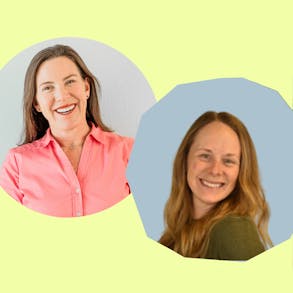
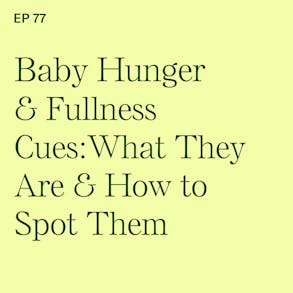
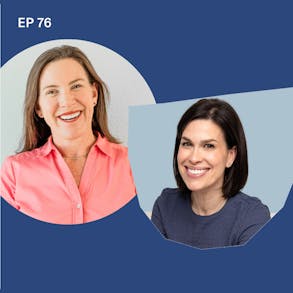
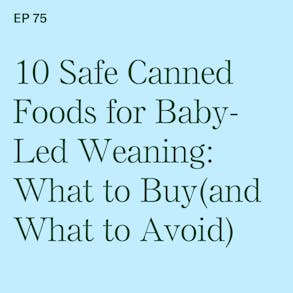
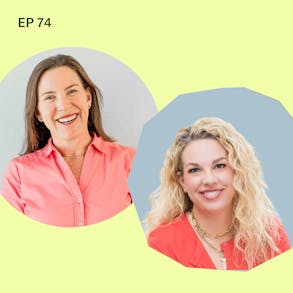
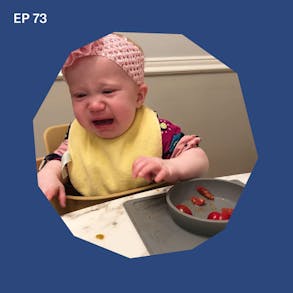
0 (0s):
How is the mental load of motherhood going for you? This baby stuff is a lot, right? Well, my goal is to give you one less thing to worry about and that's, hmm, what am I gonna feed the baby? If you are looking for a one stop solution that literally teaches you exactly how to safely help your baby learn how to eat real food, I wanna invite you to join my signature online program called Baby-Led Weaning with Katie Ferraro. This is the most comprehensive baby led weaning program out there. I give you 20 weeks of meal plans for Baby-Led Weaning to help your baby safely eat five new foods a week, which means they're going to finish their a 100 First Foods before turning one. As one mom who recently joined the program said quote, our lifestyle does not give us any mental capacity to think more about what to do with this baby.
0 (45s):
This program caters to our needs inside of the program. I have my 100 First Foods content library to show you exactly how to safely prepare all of the 100 First Foods for your baby's current age and stage. My 100 First Foods daily meal plan is also included in there. It's all in one place. And a mom in our program, she said she joined because, quote, "I'm too tired of trying to figure out so many different things at once. I want someone to tell me what to do to catch up my nine month so we can stop using the same familiar foods we've been feeding her". If you are a type A organized per person, or like let's say you wanna be that kind of person, you wanna be more organized in what you feed your baby, then I created the Baby-Led Weaning with Katie Ferraro program for you.
0 (1m 25s):
You can sign up at babyledweaning.co/program. I have one program with all the stuff you need inside of it to get this thing done and get on with your life. Again, that's babyledweaning.co/program. Check it out, and I hope to see you there coming in tops on the list of work things I thought I was gonna loathe, but I ended up loving YouTube. We have a YouTube channel. It's about a year old. It's finally picking up steam, and there are so many valuable videos over there. If you want to see what starting solid foods looks like. I know I'm telling you about a YouTube channel while you're listening to a podcast, but if you have a chance, check it out. Our channel's Baby-Led Weaning, it's literally the handle name. So original I know if you see something you like, subscribe, get notified each week when there's new videos.
0 (2m 12s):
That's youtube.com/babyledweaning. So choking is a very rare but real risk and there's no higher risk of choking when you start solid foods with a Baby -Led Weaning approach compared to conventional adult-led spoon feeding. But that only holds true when parents are educated about reducing risk. And why do babies choke? Well, they have smaller throats and smaller airways and weaker coughs to clear the food, and they're still forming muscles that sometimes result in coordination problems. There are three primary things that you can do starting right now to reduce your baby's risk of shoking Hey. there. I'm Katie Ferraro, Registered dietitian, college nutrition professor and mom of seven specializing in baby led weaning here on the Baby-Led Weaning with Katie Ferraro podcast. I help you strip out all of the noise and nonsense about feeding, giving you the confidence and knowledge you need to give your baby a safe start to solid foods using Baby-Led weaning.
0 (3m 9s):
Does the thought of your baby choking on food leave you feeling terrified? If you're scared about starting solid foods or if you feel like you're holding your baby back because you're so fearful about choking, I want you to know that you are not alone. We do a survey for all of the new parents that are in my Baby-Led Weaning with Katie Ferraro course. We ask them, what's the biggest barrier for you to do Baby-Led wWeaning or succeeding with baby led weaning or starting solid foods right now? And hands down, the most common response is that parents are terrified of gagging and choking. So in this episode, I wanna share with you what the difference between gagging and choking is so that when you leave today, you'll realize, and hopefully you'll be able to convince yourself that gagging is a good thing.
0 (3m 58s):
It's a natural necessary part of learning how to eat. Choking, of course, is very serious, very dangerous, and can be potentially life threatening, but you can help significantly lower your baby's risk of choking. So I like to start each of these mini Baby led weaning training episodes with a Baby-Led Weaning tip of the day. And today's tip is, since we're talking about gagging, is that babies won't always gag on foods right at the beginning of starting solid foods today, you're gonna learn about the difference between gagging and choking. But if you're just beginning solids, you're just starting Baby-Led Weaning, please know that your baby doesn't gag on food at the beginning because they don't really eat that much food right at the beginning.
0 (4m 38s):
Now, a few days slash weeks into this, when your baby's like really starting to bring the food to their mouth and moving it around in their mouth and some of it goes to the back and it startles them, then they'll start gagging on food. But you have to have the food in your mouth in order to gag on it. So some parents are like, don, don't know what all this business about Gagging and Choking is. Why are you making such a big deal? My baby doesn't even gag. Just wait. It will come. But I want you to hang tight and listen through to the end of this episode because I'm going to be sharing a very specific mantra that you can repeat to yourself when your baby starts gagging on food. And if you're feeling inclined to intervene, which as you'll learn today, we don't intervene. So let's get started with gagging versus choking. What's the difference? In this episode, I'm gonna share with you what is gagging, how to react to a gag, what is choking?
0 (5m 22s):
How to reduce choking? Talk a little bit about the role of CPR and then sum it up with choking prevention and response. So let's go ahead and get started with what is gagging. So gagging, as I mentioned at the outset, is a natural and necessary part of learning how to eat. And gagging is a reflex whereby the baby pushes an object out of their airway. And yes, I get it, it's uncomfortable. It's uncomfortable for your baby to experience a gag. It's uncomfortable for you to watch. But gagging is an inevitable part of learning how to eat. And gagging is essentially a good thing, okay? And it's a good important component of this whole learning how to eat process with gagging, your baby is coughing or sputtering because there's air passing through. So your baby's gonna turn red or pink when they're gagging. And here's the kicker with gags.
0 (6m 2s):
You guys, your baby can work through a gag on their own. Your baby who is six months of age plus demonstrating the other reliable signs of readiness to eat, that baby can recover from a gag on their own. And we do not intervene during a gag. 'cause if you lunge at your baby or you frighten or you startle your baby when they're gagging, that can cause a food. That's the baby's eating to be sucked into their airway and turns what was a harmless gag into a potentially harmful choke. So the first thing we need to remember when we're getting over our fear of gagging is that babies can recover from gags on their own and they don't need us to intervene. Now, I mentioned gagging is gonna be audible and your baby's gonna be making noise. Gagging is a little hard to watch and just heads up excessive gagging can lead to vomiting. And a little bit of vomiting is to be expected when your baby starts solid foods.
0 (6m 43s):
If you go to episode 20, it's all about vomiting. It's when the single most downloaded episode on this podcast. Parents love vomiting blwpodcast.com/20. If you need to learn more about vomiting, a little bit of vomiting is to be expected. But if they're vomiting every time they eat, the baby's gonna start having negative associations with food and feeding. So if your baby's coming to the table and they've got a belly full of milk, even a mild gag, but certainly a more involved one can result in the baby regurgitating or vomiting those stomach contents. And we don't wanna do that. So what we wanna do is build in a little bit of a pad, especially for our bottle fed babies. So in my program, we teach that for the bottle fed babies. We wait about one hour following the end of the bottle feed before the start of the solid food feed.
0 (7m 24s):
And that's to give the babies stomach a little bit of time to empty. And I share in that program a lot of different feeding schedules, especially for six and seven months when you're just getting started. Like how do you space the foods in with the milk? 'cause I know that's something that you know, parents get stressed out by. So with gagging, again, bottle fed babies might need an hour between the end of the milk feed and the start of the solid food feed. And sometimes you think, oh, I'm just gonna bring my hungry baby to the table and then they won't gag, but they're gonna be freaking out 'cause they're starving and we can't feed a freaking out baby. So always make sure your baby has got some milk on board, but not too much so that when they gag, they throw up. Now how do we react to a gag? Okay, first of all, we don't do anything. Okay? It takes practice. But don't lunge at your baby.
0 (8m 4s):
Don't freak out. Don't rip the food outta their mouth. That increases choking risks. Instead, I want you to stay calm. Easier said than done. I know, but allow your baby some time to self-correct? Okay, you can settle down, you smile, you put your best baby, fake baby voice on and say positive things like, come on baby, you got this. Cough it out. My friend and colleague, Don Winkleman, she's a speech language pathologist and feeding therapist, and she's a huge dog person. And I am notoriously not a huge dog person. We recently got a dog, and I like the dog, but it's not like something that I naturally would've thought, oh my God, I love dogs. I'm actually scared of dogs. And so Dawn's analogy is, okay, the way you should react and talk to your baby when they're gagging on food is the same voice that you would use when your baby is out.
0 (8m 48s):
Like you're walking your baby in a stroller and then a dog that they don't know comes up, right? And I'm like, oh my gosh. You just have to say things like, it's okay baby. This is just a dog. And you're calm and you're not alarming the baby. Even if you're freaking out that the dog is gonna rip your baby's face off. Like do the same thing when your baby's gagging. Come on baby, you got this. Cough it out. Okay? So some of you aren't there yet, but you know you have to practice these things so that we don't overreact again because you can cause that harmless gag to turn into a harmful choke. And so I like the analogy of gagging is to learning how to eat as falling down is to babies, learning how to walk, right? When your baby is learning how to walk, it's not pretty right? Your baby's gonna bump into stuff and they're gonna fall down and there's bruises and there's tears.
0 (9m 29s):
But we don't jump in and forbid our babies to learn how to walk just because there are a few necessary bumps along the way, right? The same thing goes for eating and gagging. You can't stop your baby's progress from learning how to eat just because one part of that experience, the Gagging has got you freaked out. Okay? Gagging is remarkably different from choking. So what then is choking? Choking is when food or another objects obstruct baby's airway. And choking is silent. There's no noise. Your baby's gonna turn blue and blue is bad. If I remember anything from my time in the NICU with my quadruplets, blue is bad. Okay? Remember with gagging, there's noise, right? There's air, your baby's gasping, there's sputtering, but there's air going in and out. And that's a good thing. With gags. Your baby turns red or flushed with the gag, but with choking, there's no noise and the baby will usually turn blue.
0 (10m 13s):
Now, sometimes with a choke, there might be soft, intermittent noise, but for the most part it's silent. So that's another reason why we never leave a baby unattended when eating or playing, because a choke is gonna be silent and you won't hear it happening, especially if you're in another room and not directly observing your baby. So why do babies choke? Well, they have smaller throats, they have smaller airways, they have weaker coughs to clear the food, and they have still forming muscles that sometimes result in coordination problems. Okay? But there are three things that you can do to reduce choking risk. Hey, we're gonna take a quick break, but I'll be right back.
BetterHelp (10m 48s):
This episode is brought to you by BetterHelp. If you've been thinking about giving therapy a try, BetterHelp is a great option. It's a convenient, flexible, affordable, and entirely online experience. All you do is just fill out a brief questionnaire to get matched with a licensed therapist, and you can also switch therapists at any time for no additional charge. I used to think therapy was just for people who have experienced major trauma, but therapy can help you be at your best no matter what you're going through. So whether it's to learn new positive coping skills, set more realistic boundaries, or just show up as a better version of yourself, BetterHelp is here to help. Therapy can help you find what matters to you so that you can do more of it. If you wanna live a more empowered life, therapy can help you get there and BetterHelp can help you visit betterhelp.com/weaning today to get 10% off your first month, that's betterhelp.com/weaning and get 10% off your first month.
0 (11m 58s):
Okay, so what are the three primary things you can do to reduce choking risk? The first is to wait until your baby is six months of age or six months adjusted age. And when they're demonstrating the other reliable signs of readiness to eat, most notably, is the ability to sit relatively on their own and your baby being able to sit relatively on their own is an indicator that they have the head and neck control as well as the trunk strength to support a safe swallow. Okay? So the first thing to reduce choking risk, wait until your baby is really ready to start solid foods, we have a whole pre feeding section of our program for parents of babies who are four and five months of age. Or if you're making the switch from purees to to solid foods, and you're doing finger foods, a lot of these pre feeding skills and identifying the signs of readiness to eat, that's really, really important.
0 (12m 40s):
Okay? So the second thing that you can do to lower your baby's risk of choking is to properly position them in the highchair. And the safest positioning for your baby in the highchair to be at is to have their waist at a 90 degree angle, their knees at a 90 degree angle and their ankles at a 90 degree angle, and their feet are resting flat on a solid foot plate. And what the solid foot plate does or footrest does, it helps stabilize your baby when they're gagging. So when your baby gags on food, they stomp their feet down to stabilize and engage their core, and then they utilize their mouth muscles to push the piece of food forward and outta their airway. If there's no footrest, there's no stability and resultant increased risk of choking. Okay? So the second way to lower the risk of choking is to ensure proper and safe high chair positioning. The third way you can lower your baby's risk of choking is to properly prepare and offer foods.
0 (13m 22s):
Okay. The safest size of food for early eaters, for Baby-Led weaning are soft strips of food that are about the size of your adult pinky finger. So by avoiding choking risk foods and offering the safe finger foods, that combination works to lower your baby's risk of choking regarding food preparation. Other things that contribute to choking is if you offer hard, crunchy, or crispy foods. We spend a lot of time in our program with videos showing you how to prepare all of the hundred foods on the 100 First Food list so that you know that they're safe for your baby. If you wanna check that program out, go to babyledweaning.co/program. I have a whole 100 First Food daily meal plan that walks you through 24 weeks of meal plans. There's also a 100 First Food content library with videos that show you exactly how to prepare the foods for your baby's ages and stages along with recipes that correlate to where your baby is in Baby-Led Weaning.
0 (14m 12s):
Other thing I wanna mention is the importance of refresher infant CPR. Okay, Choking is a very rare but real risk. We talked about the three things you can do to lower your baby's risk of choking. One, wait until they're really ready to start solid foods. Two, make sure they're positioned properly in their highchair. And three, prepare the food safely. So choking is a rare but real risk. And the best thing you can do to prepare yourself to know what to do in the event that your baby chokes is to take a refresher infant CPR course. So if you're having any anxiety or fear about choking and gagging, taking a CPR course will do wonders for your self-confidence, okay? And when it comes to taking that infant refresher CPR course, you can do it in person or online. You don't have to take a full blown all day certification course.
0 (14m 51s):
Okay. I actually take a course every quarter for work. It's an online program. My friend Brandon from Thrive Training Institute teaches it. I pick up something new every time I do it, and I fed at this point thousands of babies and I've never had to administer CPR. However, I know that I have the skillset to save a baby's life, should they be choking on food. And that's because I keep my CPR skills up to snuff. So if you want to check out CPR, there's a link to the course that Brandon teaches. I have a $10 off code that I'll put for you there. It's already really super affordable. You get lifetime access to it and an additional $10 off with that affiliate discount code. You. Don't have to take your CPR course today, but while you're listening to this, click that link. Get that course so that it's in your inbox and you remind yourself to do it.
0 (15m 36s):
My suggestion is that everybody who feeds your baby should have CPR skills 'cause CPR can save your baby's life. So if you'd like to learn more about the difference between gagging and choking, or if you're like, I'm not totally sold on this whole baby led weaning thing, I have a free online resource for you called Baby-Led Weaning for Beginners. This is a video workshop that I teach, it's just over an hour long, but there's lots of visuals of babies gagging on food, and then how the parents react or don't react, and lots of stuff. Visuals on how to make the foods for the first few days safe for Baby-Led Weaning. Plus everybody on that free workshop gets a copy of my original 100 First Foods list. And you can sign up to take the workshop today or later today, tomorrow, whenever your baby's napping. If you need to see what Baby-Led Weaning looks like, I highly recommend the Baby-Led Weaning for Beginners workshop.
0 (16m 20s):
And you can sign up if you go to my website, babyledweaning.Co. There's links there as well as to my full program. I'll also put it in the description for this episode. And then I'll put everything in the resources I mentioned today on the show notes page for this episode, which you can find at blwpodcast.com/4. And if gagging is still freaking you out, remember, sit on your hands, repeat after me. Gagging is a good thing. If you tell yourself that enough, you'll eventually begin to believe it. And another suggestion I have for you is to watch videos of other babies gagging and recovering on their own and going right back to eating. Okay, I've got a lot of videos on my YouTube channel. It's just youtube.com/babyledweaning. There's a whole playlist there of gagging videos.
0 (17m 0s):
But seeing other babies do this and recover on their own gives you the confidence that your baby can do the same. 'cause. I don't want the fear of gagging and choking to be holding you back from trying new foods with your baby. My goal is that your baby can safely eat a hundred different foods before they turn one. And I'd love to help you out on your baby's journey to their 100 First Foods. Check out more of my resources online at babyledweaning.co. Thank you so much for listening, and I'll see you next time.
Calm Cove (17m 39s):
Do you find it hard to sleep at night? Then? The Carb Cove Podcast can help you sleep deeply All night long, carb Cove has deeply relaxing meditation, music, and ambient sounds like ocean waves and crackling fires. All of our episodes are designed to help you relax and to fall asleep fast. Calm Cove is brought to you by the team behind Sleep Cove, the Sleep podcast that consists of spoken word, hypnosis, meditation, and stories. So if you want to listen to a beautiful soundscape tonight, search for Calm Cove on Apple Podcasts or Spotify and see how we are helping millions of people relax and go to sleep every night.
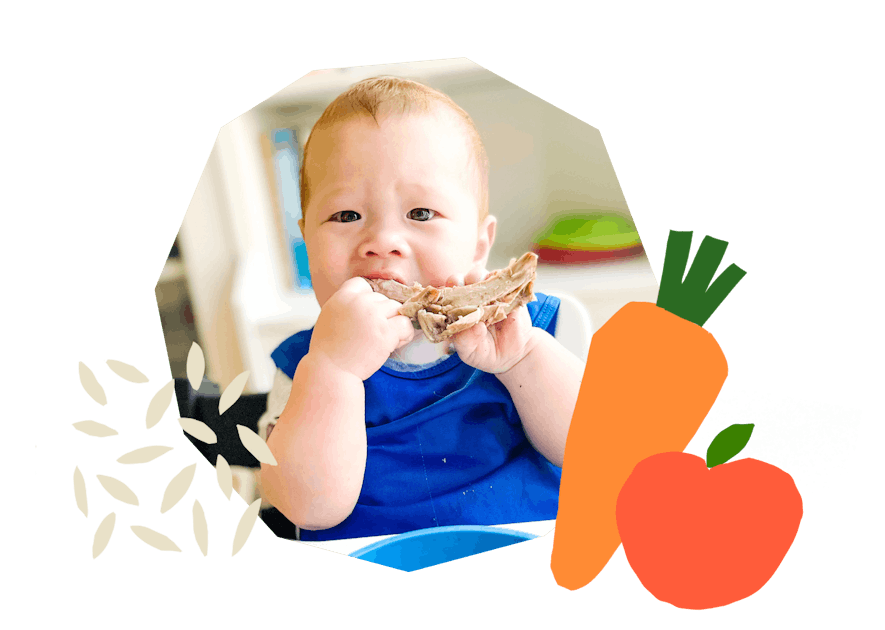
The Program Baby-Led Weaning with Katie Ferraro
A step-by-step digital program for starting solid foods safely and navigating the original 100 FIRST FOODS™ meal plan with baby-led weaning.
 EXPERT-LED, PROVEN APPROACH TO EATING REAL FOOD
EXPERT-LED, PROVEN APPROACH TO EATING REAL FOOD CONCISE VIDEO TRAININGS TO MASTER BABY-LED WEANING
CONCISE VIDEO TRAININGS TO MASTER BABY-LED WEANING 100 FIRST FOODS DAILY MEAL PLAN WITH FOOD PREP VIDEOS
100 FIRST FOODS DAILY MEAL PLAN WITH FOOD PREP VIDEOS
Baby-Led Weaning for Beginners Free Workshop
Is your baby ready to start solid foods, but you’re not sure where to start? Get ready to give your baby a solid foundation to a lifetime of loving real food…even if you’re feeling overwhelmed or confused about this next stage of infant feeding.
Get baby-led weaning recipes and tips delivered to your email inbox.


